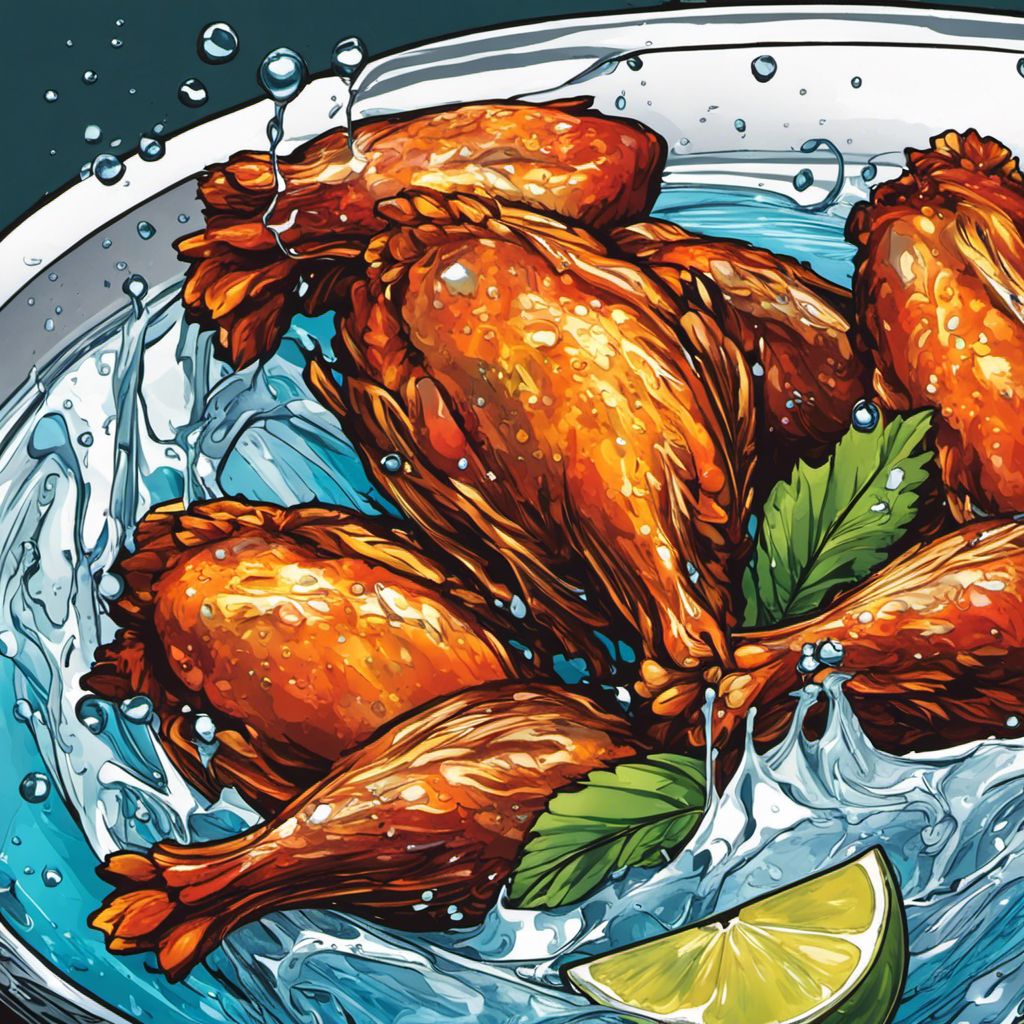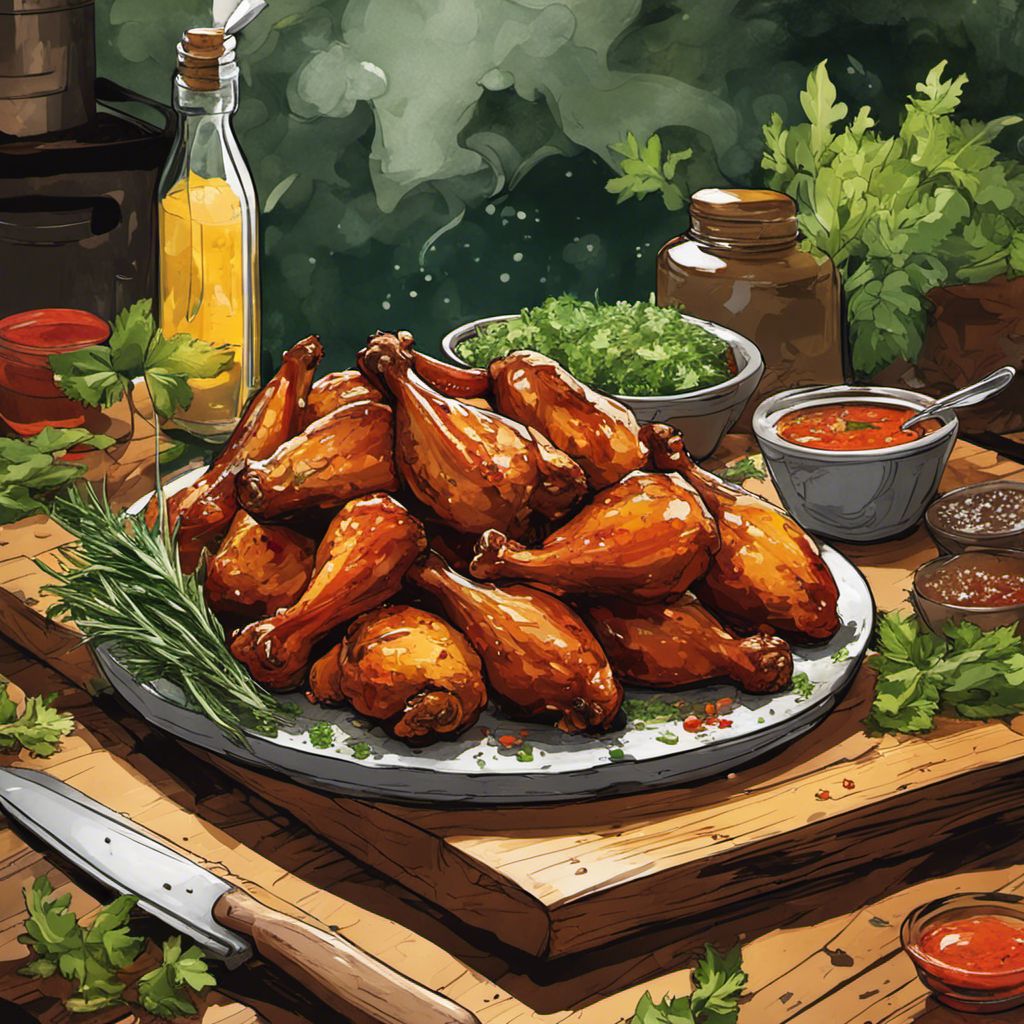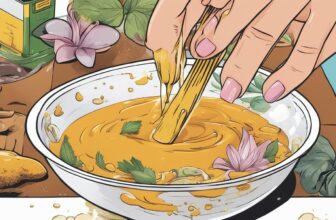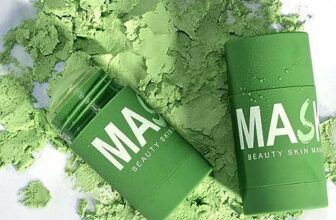
Ever found yourself hesitant about cleaning chicken wings, worrying over food safety and the pursuit of that perfect, finger-licking good dish? Believe me, you’re not alone. We’ve all been there at some point. Constructed from a mix of diligent research and hands-on experience, this article is your guiding light through the journey of properly cleaning chicken wings for lip-smackingly safe and enjoyable meals.
So let’s roll up our sleeves together and make washing chicken feel as simple as ABC!
Key Takeaways
- Washing chicken wings before cooking is unnecessary and can actually increase the risk of foodborne illnesses.
- Properly cleaning chicken wings involves removing excess fat and skin, using the right tools and materials, thoroughly washing them under cold running water, and drying them before cooking.
- Vinegar and lemon juice can be used as alternative cleaning agents for chicken wings to eliminate bacteria and add flavor.
- Following proper cleaning techniques ensures safe and delicious results when cooking chicken wings.
The Importance of Properly Cleaning Chicken Wings
Washing chicken wings is unnecessary and can actually pose risks to food safety.
Why washing chicken wings is unnecessary
Many people believe that washing chicken wings before cooking them eliminates any harmful bacteria on their surface. I used to think this way too until I learned that it’s not only unnecessary but may also pose a risk for foodborne illnesses.
The truth is, rinsing raw poultry under tap water in your kitchen sink doesn’t scrub off the germs, instead, it splashes them onto your countertops and anything else within close range.
This process of spreading bacteria from the raw meat to other surfaces through splashing or touching is termed as “cross-contamination“.
The most effective way to ensure safe food handling and prevent bacteria contamination? Simply cook your chicken wings thoroughly! Bacteria are usually present in raw foods, so cooking at the right temperature can eliminate these pathogens ensuring you enjoy a delicious plate without worry.
Apart from ruining our appetite thinking about possible illnesses we might get due to crosscontaminated preparation tools and areas around us, proper kitchen hygiene contributes significantly to an improved home living environment.
Therefore, trust the power of heat – remember no amount of water will clean off certain types of bacteria on chicken skin like thorough cooking does!
The risks of washing chicken wings
Think raw chicken wings need a good rinse before cooking? You’re not alone. Many of us grew up watching our parents wash poultry under the kitchen faucet. It turns out, though, washing chicken actually presents significant risks that might surprise you.
Firstly, it increases the chance of cross-contamination in your kitchen. When you rinse raw chicken wings in the sink, tiny water droplets containing bacteria splash around and can end up on countertops, utensils or other food items.
This spread of bacteria leads to contamination which is one reason why so many people fall sick with foodborne illnesses.
According to Consumer Reports’ experts, washing chicken can put you and your family at risk for potential food poisoning because harmful bacteria such as salmonella and campylobacter are spread by droplets of water that have come into contact with the contaminated meat.
These pathogens cause unpleasant symptoms like fever, stomach cramps and diarrhea – an outcome nobody wants when they’re simply trying to whip up some delicious wings for dinner! So next time when handling raw poultry including those wing pieces, remember this surprising fact: cleaning them through washing could do more harm than good!
Steps to Properly Clean Chicken Wings
To properly clean chicken wings, start by preparing them for cleaning. Use a sharp knife to remove any excess fat or skin from the wings. Then, gather the right cleaning tools and materials such as cutting boards, gloves, and paper towels.
Next, thoroughly wash the chicken wings under cold running water to remove any dirt or debris. Make sure to rinse them well on all sides. After washing, pat dry the chicken wings using clean paper towels before cooking them to ensure crispy results.
Preparing the chicken wings
I always begin the cleaning process by preparing the chicken wings. This involves separating each wing at the joints, resulting in three parts: the drumette, wingette (also known as a flat), and tip.
A sharp knife ensures swift and clean cuts of your chicken wings. You’ll want to keep those tips; they’re great for making homemade chicken broth.
Next comes a crucial step – washing the wings. Contrary to popular belief, it’s unnecessary and risky to wash raw poultry in your sink due to potential spread of bacteria. Instead, I opt for healthier alternatives like cleaning my chicken wings with apple cider vinegar or lemon juice.
Lime also works as an effective alternative cleaning agent for chicken wings providing a fresh citrus flavor that can be pleasing in various recipes!
Using the right cleaning tools and materials
Properly cleaning chicken wings requires the use of the right cleaning tools and materials. This ensures that the wings are thoroughly cleaned and safe to eat. One essential tool is a pair of kitchen shears, which helps in removing any remaining feathers from the wings.
Additionally, a sharp knife can be handy for trimming excess fat or skin.
To properly sanitize your cleaning utensils, make sure to wash them with hot soapy water before and after each use. This helps eliminate any potential bacteria that may contaminate the chicken wings.
It is also important to have a separate cutting board specifically designated for raw meat to avoid cross-contamination.
When it comes to cleaning materials, using a mixture of vinegar and water can effectively remove any residue on the chicken wings. You can also make a salt solution by dissolving salt in warm water for an alternative method.
Both vinegar and salt act as natural disinfectants while keeping your chicken wings safe for consumption.
Thoroughly washing the chicken wings
To properly clean chicken wings, it is essential to thoroughly wash them. This step helps eliminate any dirt or grime that might be present on the surface of the wings. By washing the chicken wings, you can reduce the risk of foodborne illness caused by bacteria and other contaminants.
It is important to use clean water and avoid washing raw chicken in the sink, as this can spread harmful bacteria. Instead, wash the wings under running water for a few minutes before patting them dry with a paper towel.
Cleaning chicken wings with vinegar is an effective method for eliminating bacteria while adding flavor to your dish. Vinegar has antimicrobial properties that help kill bacteria on contact.
To clean the chicken wings with vinegar, you can create a solution using equal parts vinegar and water and soak the wings in it for about 10-15 minutes before rinsing them off. This method not only ensures cleanliness but also adds a delicious tangy taste to your chicken wings.
Remember, after washing your chicken wings thoroughly, make sure to dry them before cooking or preparing them further. Drying helps remove excess moisture from the surface of the wings and promotes even cooking.
Drying the chicken wings before cooking
Drying the chicken wings before cooking is an essential step to ensure a safe and delicious result. When you dry the wings thoroughly, it reduces the risk of oil splatter during frying.
This is especially important if you’re planning to fry your chicken wings, as excess moisture can cause hot oil to splatter and potentially lead to accidents or burns. By blotting the wings dry before cooking, you create a barrier between the moist surface of the wings and the hot oil, resulting in a safer cooking process.
Not only does drying your chicken wings help with safety, but it also contributes to achieving that crispy texture we all love. When there’s excess moisture on the surface of the wing, it can prevent proper browning and crispiness when cooked.
By taking the time to pat them dry using paper towels or even air-drying them for a few minutes after washing, you allow any excess moisture to evaporate and give room for that golden crust to form.
Alternative Methods for Cleaning Chicken Wings
Discover two easy and effective alternatives to traditional chicken wing cleaning methods that will ensure safe and delicious results every time.
Using vinegar to clean chicken wings
I love using vinegar as an alternative method for cleaning chicken wings. It’s simple and effective. To get started, you’ll need to make a solution by mixing equal parts water and white vinegar.
Then, all you have to do is submerge the chicken wings in the vinegar solution for about 15 minutes. This process helps remove any surface blood from the wings, making them ready for further cleaning.
Not only does vinegar help with blood removal, but it also acts as a disinfectant. Applying an acidic solution like vinegar or lemon juice to chicken wings can help reduce the presence of bacteria and make them safer to consume.
Additionally, if you’re looking for ways to add flavor to your chicken wings, consider using vinegar powder mixed with salt and other ingredients. This combination creates flavorful coatings that will enhance your wing experience.
Using lemon juice to clean chicken wings
Lemon juice is a great alternative for cleaning chicken wings. Its acidic properties help break down proteins and remove impurities from the meat. When soaking the wings in a mixture of lemon juice and water, any residual blood and dirt can be effectively removed.
Additionally, lemon juice can also neutralize odors and rinse off bacteria, leaving your chicken wings fresh and ready to cook. While it’s important to note that lemon juice should not be relied upon as the sole cleaning method, it can be a natural and effective cleaner for poultry.
So give it a try next time you’re cleaning your chicken wings!
Conclusion
In conclusion, following proper cleaning and preparation techniques for chicken wings is crucial for ensuring safe and delicious results. By rinsing the wings under cold running water, using vinegar solutions or lemon juice to clean them, and thoroughly drying them before cooking, you can remove any potential contaminants and enhance the flavor of your wings.
Remember to always maintain a clean work area and practice good hygiene when handling raw poultry to keep your tailgate wings safe and enjoyable for everyone.
FAQs
1. Should I rinse chicken wings before cleaning?
Yes, it is important to rinse chicken wings under cold running water before cleaning to remove any dirt or debris.
2. How do I remove the excess fat from chicken wings?
To remove excess fat from chicken wings, use a sharp knife or kitchen shears to trim off any visible fat or skin.
3. Can I clean chicken wings with soap and water?
No, you should never clean chicken wings with soap and water as it can spread bacteria. Rinsing them under cold running water is sufficient.
4. How should I store cleaned chicken wings for later use?
After cleaning, pat the chicken wings dry with paper towels and store them in an airtight container in the refrigerator for up to 2 days.
5. Are there any specific precautions I need to take while handling raw chicken wings?
Yes, always wash your hands thoroughly after handling raw chicken. Avoid cross-contamination by using separate cutting boards and utensils for raw meat and other ingredients.







